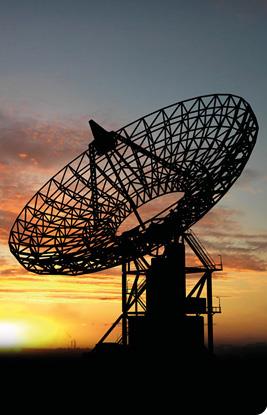08 April 2024

Satellite technology is not strictly a new communications tool. Major Asian nations have long used satellite solutions to deliver traditional telecoms and broadcasting services, albeit on a narrow scale. However, recent leaps in innovation have enabled new use cases that could bring the benefits of satellites to a wider population.
Increased reliance on satellite technology can improve the state of connectivity in the region. The latest data from the International Telecommunications Union shows that a third of the Asia Pacific population remains offline, highlighting how substantial this effect could be. The divide is even greater between urban and rural areas, with only half of the latter’s population currently able to access the internet. The rollout of new-generation satellite systems is expected to help address this, given their adaptability and cost-effectiveness. As an Asian Development Bank study points out, the boom of low Earth orbit (LEO) satellite constellations has tremendous potential to positively impact developing countries in the region as high-speed and high-quality internet connectivity becomes a reality.
However, beyond providing connectivity, satellites have the potential to improve human lives by empowering communities and stimulating economic development. Governments are starting to recognise the transformative power of satellite communications to drive digital inclusion and unlock new pathways to progress, especially in oft-overlooked areas.
Enabling access to digitally-based public services
Satellite connectivity is highly adaptable for countries with challenging geographical conditions. As such, it is not surprising that the archipelagos that envelop the Pacific have been increasingly leveraging satellites for the delivery of crucial public services, especially in unconnected areas.
In Indonesia, the government has launched the Nusantara-3 satellite, which is specifically targeted to advance the country’s digital transformation initiatives. Apart from sustaining the digital economy, the satellite aims to foster the conduct of educational activities by enabling remote learning and access to different educational resources. This year, Indonesia intends to launch another satellite, the Nusantara-5, the capabilities of which extend beyond communication infrastructure. Nusantara-5 aims to bolster the country’s food and environmental security initiatives through its disaster management, agricultural monitoring, and Earth observation functionalities.
Meanwhile, the Philippines recently announced an agreement with Astranis to deploy two micro-GEO satellites later this year. These satellites, dubbed Agila, will provide coverage for 10 million users in remote areas. The project aims to spur wider digital adoption in the countryside by creating more than 10,000 direct and indirect jobs and generating US$400 million in investments over the next eight years. This would be useful for the country’s fledging agriculture industry, as connectivity provided by satellites could be used for crop monitoring and irrigation activities. It could even improve access to credit by farmers, effectively contributing to financial inclusion goals.
Saving lives and improving health outcomes
Satellite technology has also helped to improve health outcomes. In Papua New Guinea, the PNG Sustainable Development Program has worked with Kacific and a renewable energy company to install 30 satellite dishes powered by a solar system. These dishes have connected 30 remote health facilities in the country’s Western Province to the outside world, enabling local community health workers to access the internet through mobile phones and seek specialist medical advice from doctors based at hospitals outside these rural areas. This solution has averted medical emergencies, with health workers no longer having to travel three days by foot to access specialist advice from other facilities.
In the Pacific more generally, lives are often put in danger due to the threats posed by natural disasters. During these critical times, satellite connectivity has become instrumental in responding not just during the onset of disasters but also during their aftermath. In Tonga, for instance, the volcanic eruption and resulting tsunami that battered the island state in 2022 severely damaged the subsea cable linking it to the internet, effectively cutting the country off from the rest of the world. Portable satellite terminals have been sent to Tonga to provide temporary relief and aid in recovery efforts. This serves as a testament to the resilience of satellite technology, as well as its capabilities in ever-changing conditions.

Fulfilling the promise of meaningful connectivity
Satellite technology currently appears to be the practical choice in Asia Pacific. It also has the momentum to help catalyse the ongoing digital transformation of nations in the region. Beyond providing access to information, the resulting connectivity from satellites opens a realm of possibilities, especially for communities that have traditionally been left behind. This enables opportunities for millions who remain unconnected, offering a new way to access critical public services that have the potential to improve their quality of living. In effect, satellite technology can not just bridge the connectivity gap but also act as a link towards progress and prosperity.






